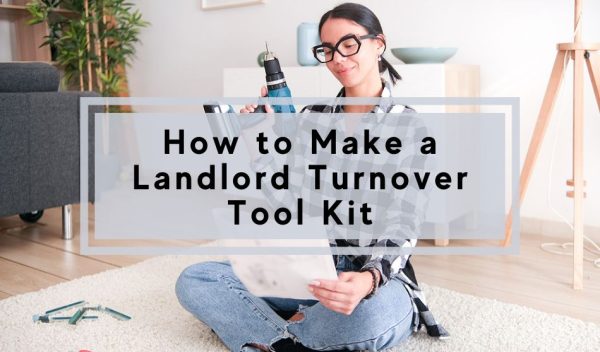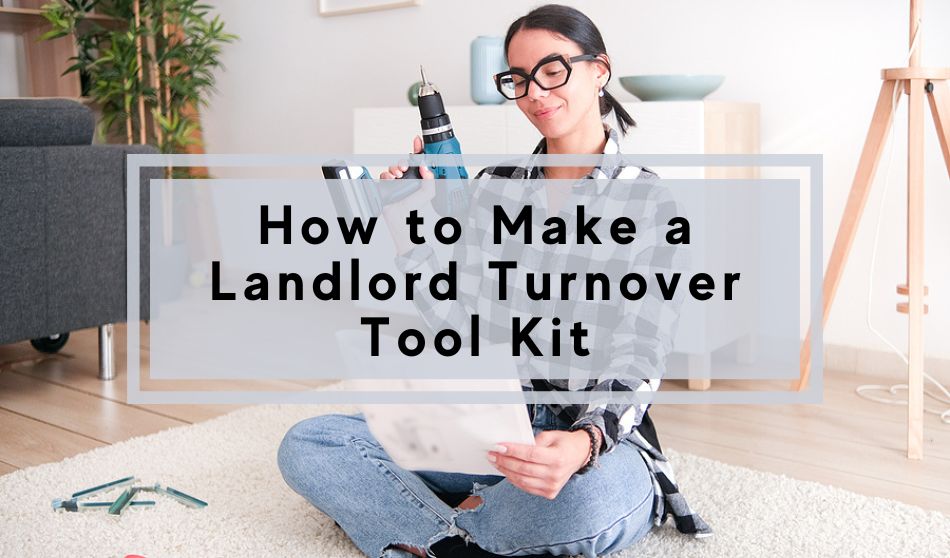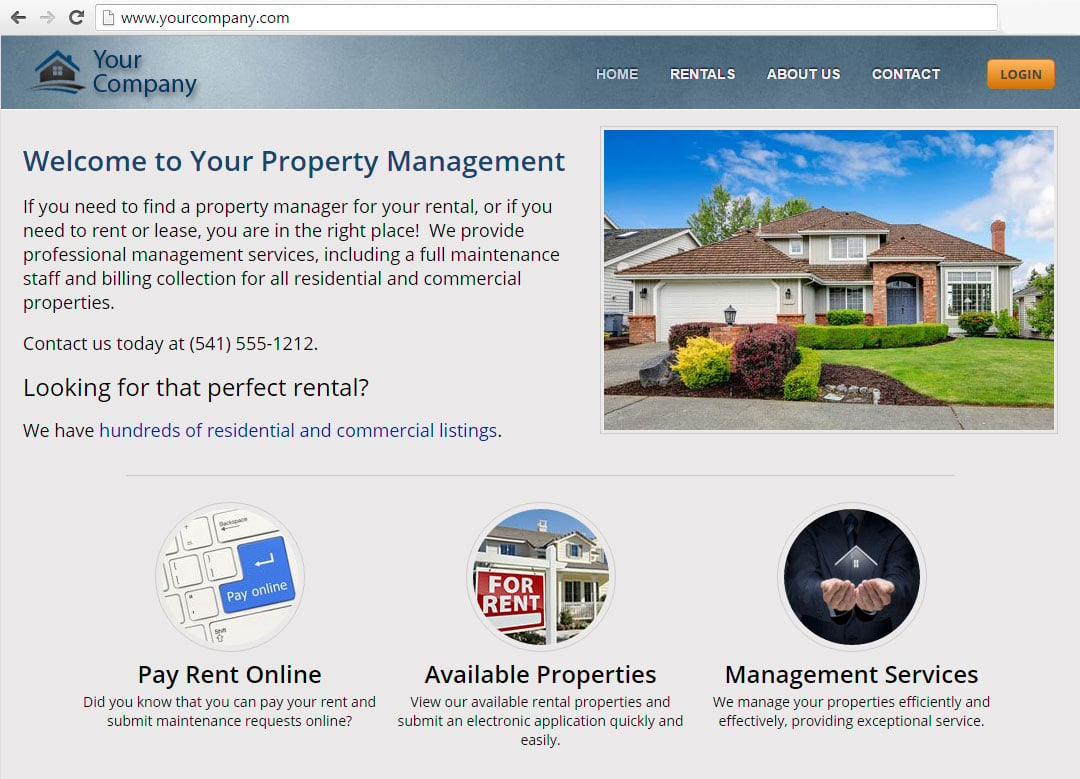
Turnover can be a stressful time for landlords and property managers. Not only is it a very expensive process, it is very time intensive and can require you to wear many different hats. This is true for everyone that runs or owns a rental business, but it might be especially true for the DIY landlord attempting to manage the rental while taking care of all of the nitty-gritty tasks on their own.
If you are a DIY landlord dealing with turnover, there are–thankfully–a few tools you can utilize to help make the process a little bit smoother. This landlord turnover toolkit should be on-hand the next time you have to deal with the end of a tenant’s lease agreement.
Cleaning and Maintenance Checklist:
To ensure that you do a uniform job each time you were dealing with tenant turnover or to ensure that you can pass along the task to a trusted associate, having a cleaning checklist is essential for tenant turnover. This will ensure that you are tackling all of the areas that need to be done without missing any important tasks. This can also be utilized as a guideline for your next walkthrough at the end of tenant turnover. A well-written cleaning checklist can also serve double duty as a move-in inspection checklist once your new tenant moves in. tackling each area, ensuring that there are no flaws and that everything is clean, and then documenting it is crucial to proving tenant damage at the end of tenancy.
Cleaning Tools for Turnover:
For a DIY landlord, cleaning tools are essential to your landlord toolkit. If you don’t plan to outsource the cleaning to a professional team, having a few handy tools ready for tenant turnover is essential. While harsh stains or difficult odors may be best left to the pros, most landlords can save by cleaning between tenants independently. Just be aware that this process will require more elbow grease than your standard deep cleaning. With that in mind, having these tools will be a priority to ensure you are up to the task.
Handheld Steamer:
Nothing can quickly remove grease and grime as effectively as a handheld steamer. These are crucial for tackling any grease in the kitchen or mildew in bathrooms. Steamers are really inexpensive and are easy to use. However, make sure that you are not using your steamer on any items that should not be steamed or that you are not using your steamer in one spot for too long because this can cause moisture damage if you are utilizing your steamer correctly. Be sure that you follow manufacturer recommendations to prevent any damage during the cleaning process.
Steam Mop:
Just as a handheld steamer is incredibly effective at breaking down grime, a steam mop is ready to do the same for any hard surface floors in your rental property. The added bonus of using a steam mop is that you are also disinfecting the area at the same time, ensuring a truly deep clean for your next tenant. However, just like with the handheld steamer, it is vital that you look at manufacturer recommendations to assess whether or not your flooring materials can handle steam.
If too much steam is released into crevices of wood floors or laminate flooring, it can cause peeling, buckling, and other damage. Keep this in mind before utilizing a steamer on your rental property flooring.
Maintenance tools:
A selection of maintenance tools will be necessary to complete cosmetic repairs and minor damage to the rental. What you need will depend on your rental size, the care your previous tenants took, and the amount of maintenance you wish to DIY. Some tasks can be outsourced depending on your skill set.
Whether you choose to DIY your maintenance tasks or not, tenant turnover is an excellent time to tackle any larger maintenance tasks you would like to see completed. If you would like to renovate, upgrade or simply perform a few general handyman tasks at the rental property, now is the time to do it. A vacancy ensures you will not have to bother a tenant, coordinate schedules, or move furniture around.
For simple cosmetic repairs between tenants, here are a few essential things you should have on your list of to-do’s:
- Carpet Cleaning
- Painting
- Changing the locks
- Replacing air filters
- Testing all alarms
Based on your time and budget, you will have to determine which of tasks will be DIY and which will be done by a professional. Remember that carpet cleaning and painting will always be a higher quality job when performed by a professional company. Naturally, that will also mean that the job will be more expensive.
If you have a short time between one tenant and another, hiring a professional can relieve some of the stress during a time crunch. Either way, ensure you understand how long each tenant turnover task will take.
Here are some general time guidelines for turnover tasks:
- Carpet Cleaning: While having the carpet cleaned will take some time, the longest part of the process will be waiting for the carpet to dry properly. This will depend on airflow in your room, humidity, and your carpet type. Estimate between 2 and 24 hours, and keep in mind that the weather in your area will affect this process.
- Paint a room: When you factor in cleaning the walls, taping the walls, painting time, and drying time. It can take up to 8 hours to paint just one room.
- Change the Locks: Home Depot’s how-to guide suggests replacing a lock should take less than an hour. Keep in mind, that you will likely have multiple locks that need to be changed at the property.
- Replace the Air Filters: Replacing the air filters in your rental home will only take a few minutes. It can be a good idea to leave additional filters so your tenants are more likely to replace the filters and prevent damage to the HVAC.
- Test the Alarms: Testing your property’s smoke and carbon monoxide alarms is crucial. This will only take a few minutes, but you must plan to replace any alarms that are not working.
If you plan to complete all of these tasks on your own, there are some important tools you’ll need to have in your landlord turnover toolkit:
- Rental-friendly interior paint
- Painting tools
- These can include standard rollers and brushes, or you may find investing in a consumer-grade paint sprayer worthwhile. This can get the job done way more efficiently if you utilize it well and are willing to take the time to block off any areas that should not be painted.
- Toolbox
- A standard toolbox will be necessary for many tasks at your rental property, especially if you are adjusting any fixtures repairing cosmetic damage, and changing out the locks for the previous tenant from the previous tenant. Your landlord toolkit should always have a literal tool kit with you.
- New locks
- Be sure when purchasing a lock kit that you have all of the tools necessary for that particular kit. No one wants to arrive at the rental property only to take another trip back to the hardware store.
Camera and Mobile Phone or Tablet:
Documentation is essential to ensure that you are adequately protected if your new tenant causes damage to the rental property. A crucial part of tenant turnover is documenting the state of the rental property before your new tenant has moved in. Complete a rental inspection via a traditional camera and personal notes, or make it extremely easy for yourself and complete a rental inspection via your mobile phone on a mobile app. Whatever you choose to do, be sure that you do not skip this vital step that may be legally required in your area.
Learn more: New Security Deposit Law will Impact Rental Inspections
Having all the items necessary to make tenant turnover as smooth as possible will decrease stress and ensure that your rental property is rent-ready in no time at all. The next time you deal with the stress of tenant turnover, make sure you have these helpful tools in your back pocket.






